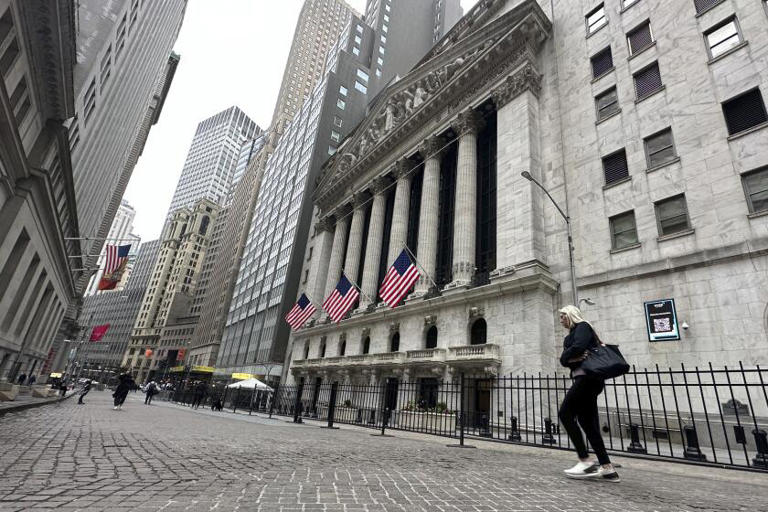The U.S. stock market experienced a notable decline on Tuesday, marking the end of what has been the worst month for equities since September. The Standard & Poor’s 500 (S&P 500) index fell by 1.6%, solidifying its first losing month in the last six. The Dow Jones Industrial Average dropped by 570 points, representing a 1.5% decline, while the Nasdaq composite lost 2%.
One of the key factors behind this downturn was renewed concern about inflation and expectations of sustained high interest rates. A report revealing larger-than-anticipated gains in wages and benefits for U.S. workers during the first quarter contributed to worries about inflationary pressures. While such wage growth is typically viewed positively as a sign of a robust job market, it also raises concerns about inflation, as businesses may pass on higher labor costs to consumers through price increases.
The market reaction underscored a shift in investors’ expectations regarding the Federal Reserve’s monetary policy stance. Traders largely abandoned hopes for multiple interest rate cuts in 2024, as evidenced by data from CME Group. This change in sentiment was a significant departure from earlier forecasts, which had anticipated a more accommodative monetary policy. The prospect of fewer rate cuts or even none at all dampened investor sentiment, particularly among those who had anticipated interest rate reductions to stimulate economic growth and support stock prices.
Furthermore, the surge in Treasury yields in the bond market exacerbated the downward pressure on stocks. Rising yields can lead to higher borrowing costs for businesses and consumers, potentially impacting spending and investment. Moreover, higher yields on fixed-income securities can make stocks appear less attractive by comparison, prompting investors to reallocate their portfolios away from equities.
Traders also awaited an announcement from the Federal Reserve regarding its interest rate decision, scheduled for the following day. While no changes to the main interest rate were expected at the meeting, investors were keenly interested in Federal Reserve Chair Jerome H. Powell’s commentary on the economic outlook and monetary policy trajectory for the rest of the year. Any hints or signals from the Fed regarding its future policy actions could have significant implications for market sentiment and asset prices.
Earnings reports from major companies provided both positive and negative catalysts for individual stocks amid broader market volatility. Companies that exceeded earnings expectations and provided optimistic guidance experienced stock price increases, potentially offsetting some of the broader market declines. Conversely, disappointing earnings or outlooks weighed on their respective stock prices and contributed to overall market weakness.
In summary, a combination of factors, including inflation concerns, interest rate expectations, bond market dynamics, anticipation of Federal Reserve announcements, and developments in earnings season, influenced investor sentiment and contributed to the decline in U.S. stocks on Tuesday. These factors underscored the intricate interplay of economic and financial variables shaping market behavior during a period of heightened uncertainty and volatility.
